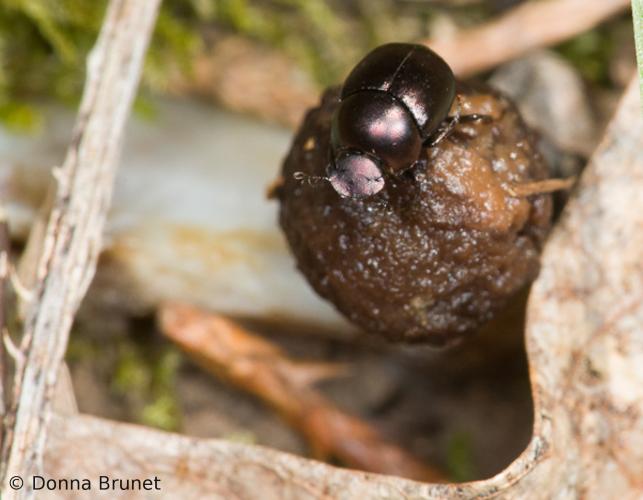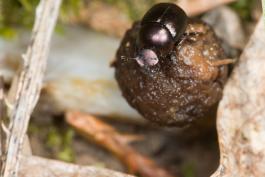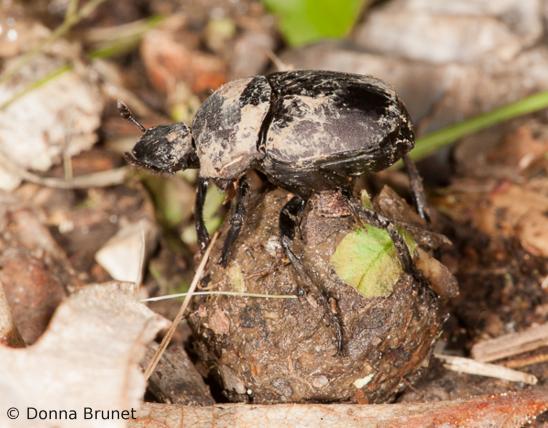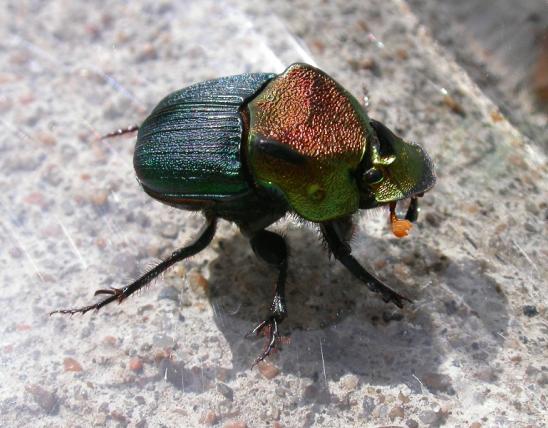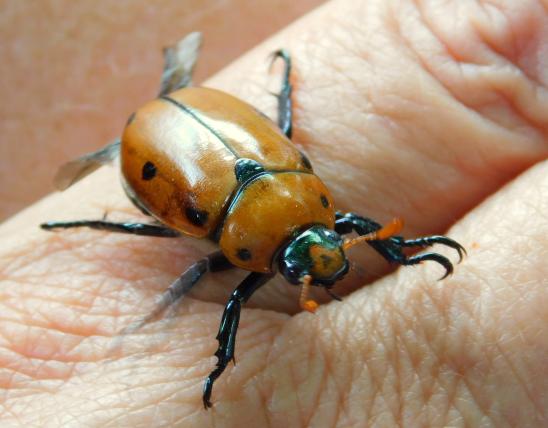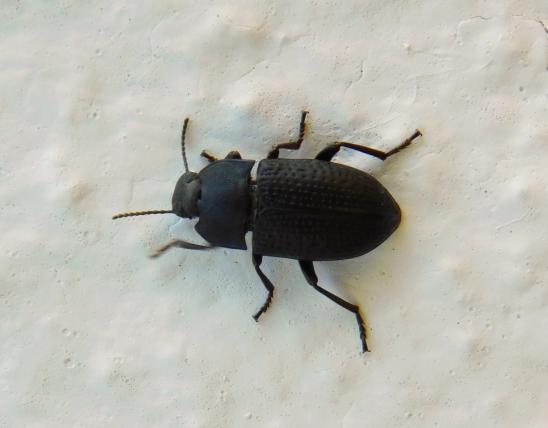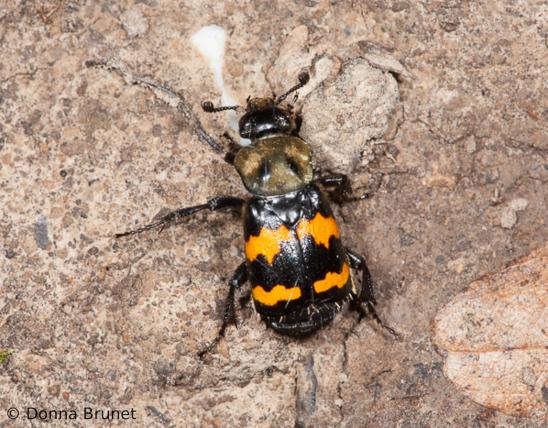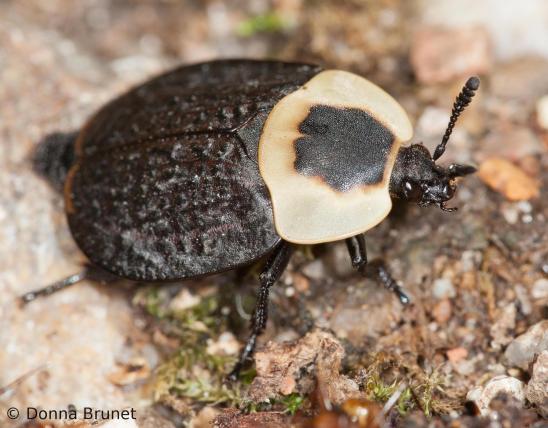
Tumblebugs in genus Canthon create two kinds of dung balls: brood balls, to lay eggs in and for their larvae to eat, and food balls, for the adults to consume. Face down, the males roll the balls backward, pushing it along with their hind legs. The female often rides the ball of dung or helps the male to push.
There are about 20 species in this genus in North America north of Mexico, and they can be difficult to tell apart. These beetles are smooth, rounded, and plain black. A few species have an iridescent green, purple, or red sheen. As with other dung beetles, the forelegs are powerful and spined, because these beetles are adapted for digging through soils for dung deposition.
Learn more about tumblebugs and other dung beetles in their group entry.
Length: ¼–¾ inch (varies with species).
Statewide.
Habitat and Conservation
Dung beetles are usually seen on, near, and beneath dung (feces). They are sometimes seen rolling dung balls away from the original heap, heads down and pushing the ball backward with their hind legs. The adults often fly to lights at night. Although initially revolting, the feeding habits of dung beetles are intensely fascinating. Plant material is difficult to mammals to digest, and dung beetles capitalize on nutrients that pass undigested through a mammal’s digestive tract.
